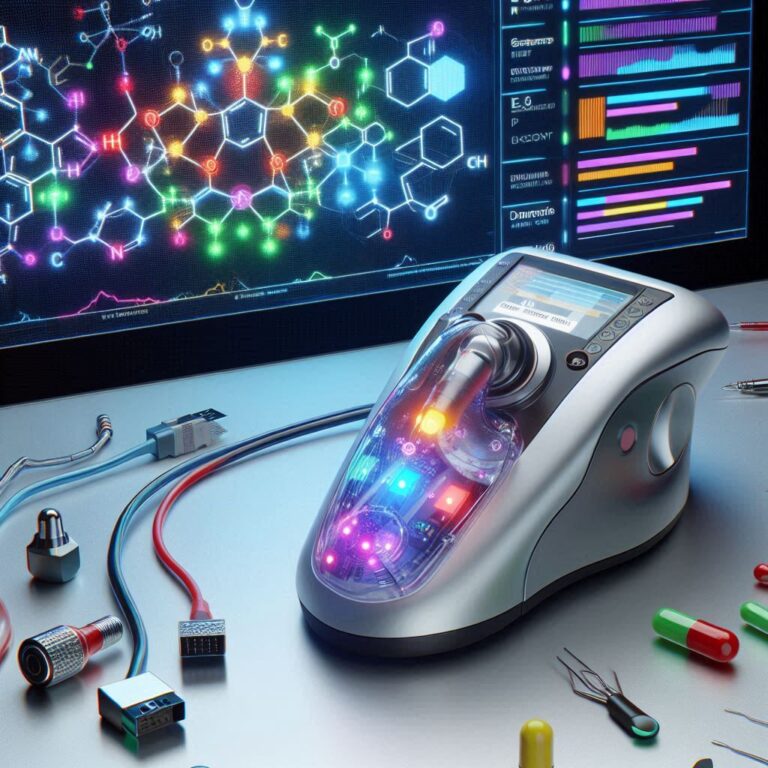Introduction- Invention of Watch
Ever wondered how we went from bulky sundials to sleek timepieces adorning our wrists? The history of timekeeping is a fascinating tale of human ingenuity, filled with clever inventions and relentless pursuit of accuracy. Today, we embark on a journey through this captivating timeline, exploring the invention of watch, from its humble beginnings with Peter Henlein to the sophisticated marvels of quartz watches and mechanical watches. Buckle up, time travelers, as we delve into the world of ticking gears and precise measurements!

The Origin- History of timekeeping
Watches were not born overnight; their development spanned centuries. The first inklings of the history of timekeeping (portable timekeeping devices) appeared in the 16th century, laying the groundwork for the watches we know today. Initially, these were pocket watches, small enough to be carried conveniently.
Ancient Times (Before 1500 AD):
Before the invention of the watch, humans relied on ingenious methods to track the passage of time, drawing on the natural world and their own creativity. Let’s delve into these fascinating early timekeeping practices and explore their historical significance:
Sundials:
Concept and Variations:
The simplest and oldest timekeeping method is utilizing the sun’s shadow cast on a marked surface. While the basic concept of using the sun’s shadow to tell time remains constant, sundials come in diverse forms:
- Horizontal sundials: The most common type, with a flat plate marked with hour lines. The shadow of a stylus (gnomon) cast by the sun indicates the time.
- Vertical sundials: Mounted on walls, often facing south, and use the same principle as horizontal sundials.
- Equatorial sundials: Aligned with the Earth’s axis, offering more accurate timekeeping throughout the year.
- Armillary spheres: Miniature models of the celestial sphere are used for astronomical observations and time calculations.
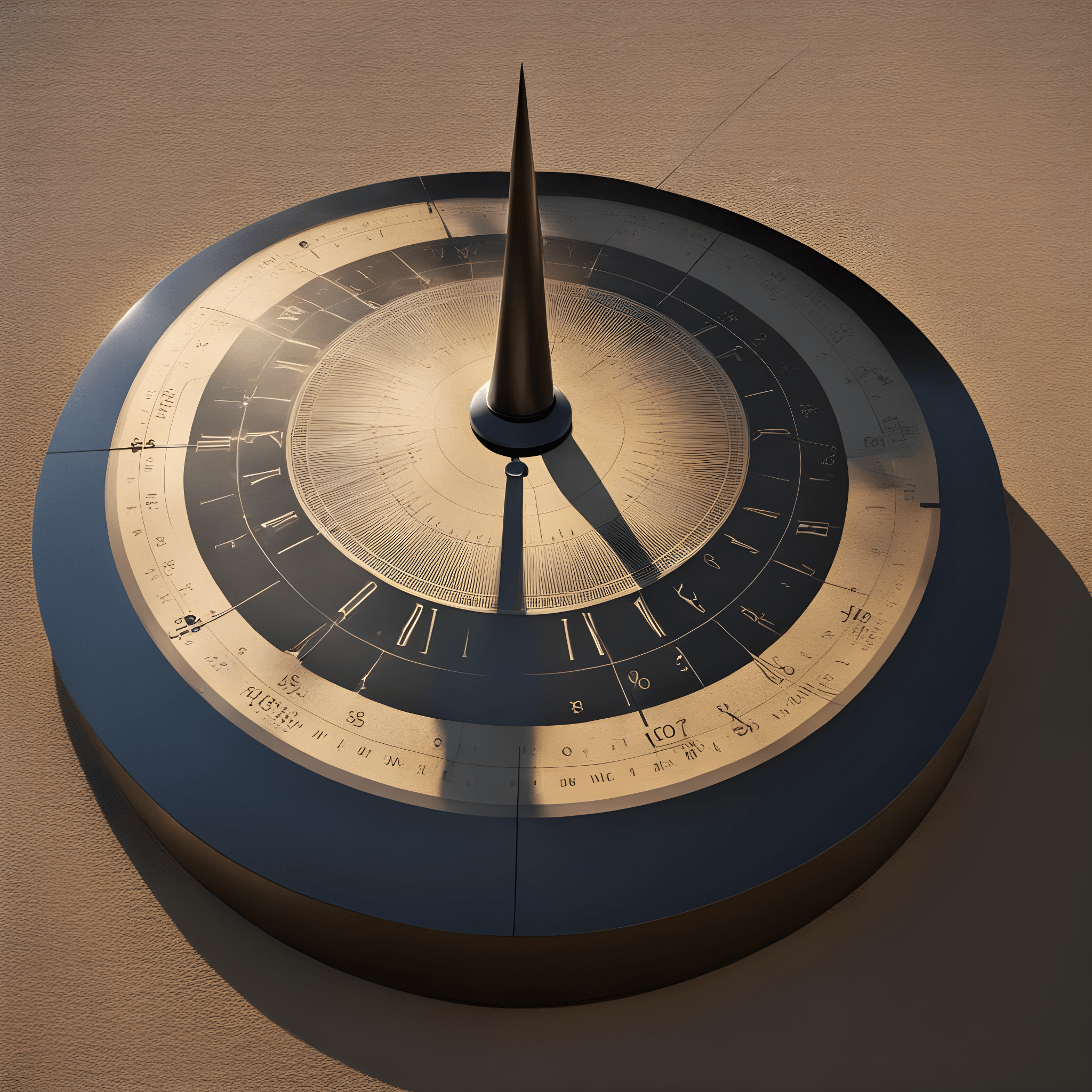
Historical Records:
- Konark Sun Temple (India, 13th Century): This majestic temple incorporates a giant sundial, accurately measuring time throughout the day.
- Obelisks in Egypt: Giant obelisks, like the one in Luxor, served as sundials and functioned as religious symbols.
- Roman sundials: Numerous sundials found in Pompeii and other Roman cities offer insights into daily life and timekeeping practices.
- Babylon: Clay tablets from 2000 BC mention sundials, suggesting their widespread use in Mesopotamia.
References:
- “The World of Timekeeping” by Michael Clerke: Provides a comprehensive overview of sundials throughout history.
- “The Obelisks of Egypt: Their History, Purpose, and Significance” by Richard H. Wilkinson: Offers details on the astronomical and timekeeping functions of Egyptian obelisks.
- Ancient Usage: Farmers used sundials to plan agricultural activities, sailors navigated by the sun’s position, and public squares often featured sundials for general timekeeping.
- Religious symbols: The Egyptians associated obelisks with the sun god Ra, connecting timekeeping with the divine.
- Architectural marvels: The Konark Sun Temple in India is a UNESCO World Heritage Site, showcasing the intricate design and astronomical knowledge embedded in sundials.
- Social markers: Public sundials in Roman forums served as gathering points and facilitated daily routines.
Water Clocks (3000BC):
Concept and Variations:
The core principle of water clocks involves the controlled flow of water through an orifice, with the time measured by the water level dropping in a marked container. However, various designs existed:
- Simple outflow clocks: Water flowed out of a hole in the bottom of a vessel, marking time as the level decreased.
- Influx clocks: Water flowed into a vessel with a constant inflow, and the rising water level indicated time.
- Clepsydras: These intricate devices used chambers, floats, and gears to achieve more precise timekeeping and even incorporate features like alarms and displays.
Historical Records:
- Babylonian water clocks (3rd Century BC): Fragmented remains of water clocks dating back to the 3rd century BC showcase their early use in Mesopotamia, possibly for astronomical observations and religious rituals.
- Clepsydras in Ancient Greece and Rome: Clepsydras were widely used in these civilizations, with famous examples like the “Tower of the Winds” in Athens and intricate designs found in Pompeii. They served various purposes, from regulating court proceedings to measuring scientific experiments.
- Chinese water clocks: Remarkable water clocks with complex mechanisms, automata (moving figures), and even alarms were developed in China, demonstrating their advanced engineering skills and artistic flair.
- Egypt: Hieroglyphics depict water clocks with graduated markings, suggesting their importance in daily life and possibly even agriculture.
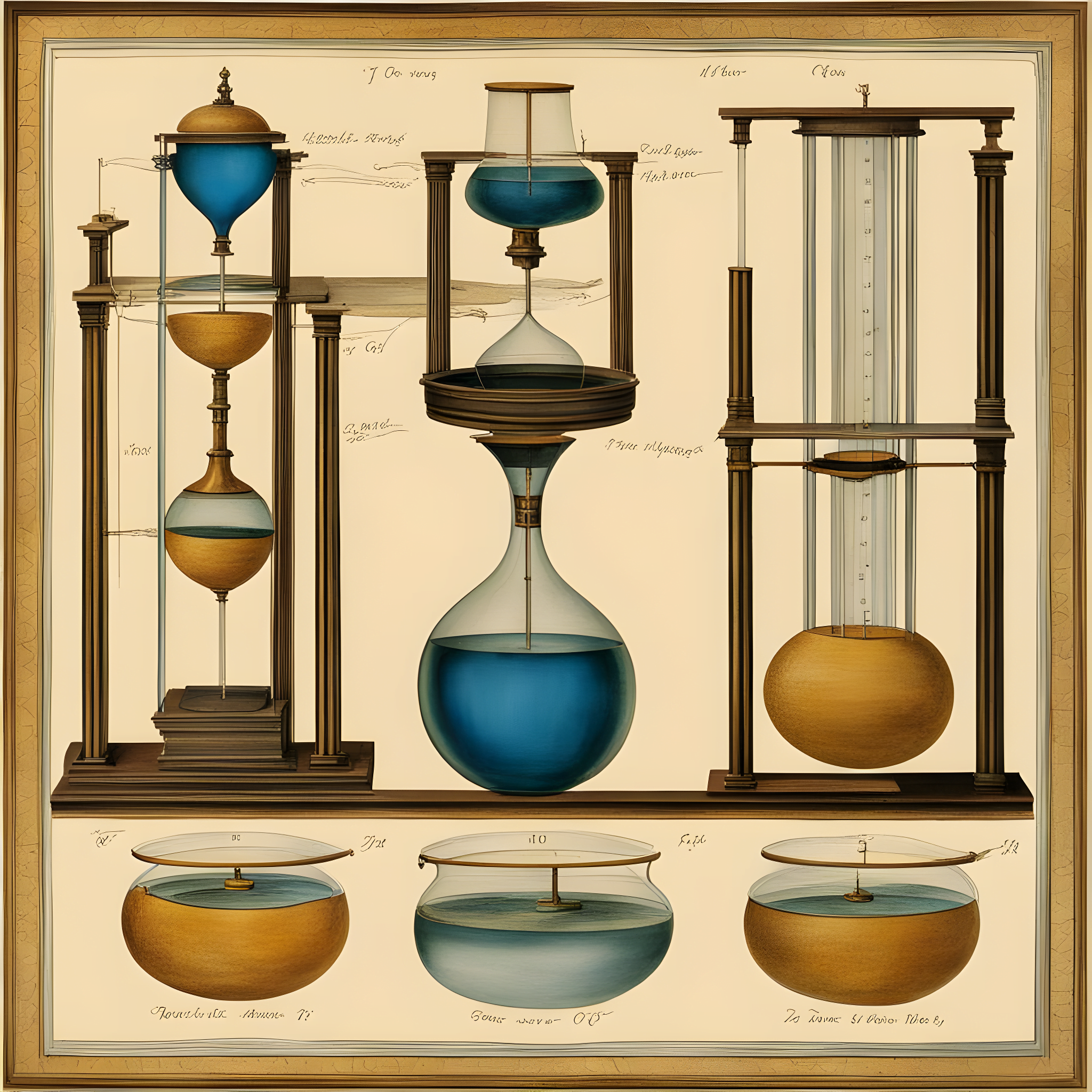
References:
- “Water Clocks in the Ancient World” by Derek J. de Solla Price: Explores the history and technology of ancient water clocks.
- “Clepsydra: The Water Clock in Ancient Greece and Rome” by M.T. Jones: Provides detailed information on Greek and Roman water clocks.
Ancient Usage:
- Water clocks measured court proceedings, public speeches, and scientific experiments, demonstrating their diverse applications.
- Symbols of power and knowledge: Owning a water clock often signified wealth and status, and their intricate designs reflected scientific understanding.
- Tools for religious rituals: Timing offerings and ceremonies was crucial in many cultures, and water clocks provided accurate measurement.
- Navigational aids: Early sailors used water clocks to estimate time at sea, laying the foundation for later maritime navigation tools.
Hourglasses:
Concept and Variations:
The hourglass’s core principle is deceptively simple: sand flows through a narrow neck at a constant rate, marking the passage of time. However, variations existed:
- Single-bulb hourglasses: The most common type, measuring a set duration (usually minutes) with one bulb and a single flow of sand.
- Multi-bulb hourglasses: These had multiple bulbs and chambers, allowing for longer time measurement and even the ability to measure multiple intervals simultaneously.
- Inclined hourglasses: Tilted at an angle, they facilitated continuous flow and were often used for marine navigation.
- Decorative hourglasses: Ornate designs with colored sand, intricate frames, and even symbols served as decorative pieces and conversation starters.
Historical Records:
- Ancient Egypt: Evidence suggests the use of sand-filled vessels for timekeeping as early as the 14th century BC, although their precise function remains debated.
- Medieval Europe: Hourglasses flourished in the 14th-16th centuries, becoming indispensable tools for measuring sermons, legal proceedings, and even cooking times.
- Maritime Navigation: Inclined hourglasses, unaffected by ship movement, were crucial for measuring time at sea and determining longitude.
- Science and Medicine: Scientists used hourglasses for precise measurements in experiments, while physicians tracked pulse rates with their aid.
- Ancient Usage: Though the exact use of ancient sand-filled vessels is unclear, hourglasses in later periods were used for tasks requiring precise time measurements, like navigation and medicine.
Portable Timepieces:
- Astrolabes: Used for navigation and astronomical observations, incorporating timekeeping features.
- Portable sundials: Smaller versions of sundials for individual use, often carried by travelers and merchants.
- Clepsydras with portable designs: Miniature water clocks for limited timekeeping on the go.
- Historical Records:
- Astrolabes from Islamic civilizations: These beautifully crafted instruments served as navigational and timekeeping aids for centuries.
- Medieval European portable sundials: Examples found in archaeological digs showcase the ingenuity of craftsmen in creating portable timekeeping devices.
References:
- “The History of the Astrolabe” by James Evans: Offers a detailed history and explanation of astrolabes.
- “Portable Sundials: A History” by Gerald North: Examines the development and use of portable sundials throughout history.
Ancient Usage:
These portable devices enabled individuals to track time while traveling, navigating, or performing specific tasks requiring time awareness.
Peter Henlein- Mechanical Watch(16th Century)
The 16th century witnessed a revolutionary leap in timekeeping with the emergence of the portable mechanical watch. At the forefront of this innovation stood Peter Henlein, a humble locksmith from Nuremberg, Germany, often hailed as the “father of the watch.”
Henlein’s Journey:
While details of Henlein’s life remain somewhat scarce, historical records reveal him as a skilled artisan and entrepreneur. Born around 1479 or 1485, he apprenticed as a locksmith, mastering the intricate workings of locks and mechanisms. By 1509, he had established himself as a master locksmith in Nuremberg, a city renowned for its craftsmanship.
The Nürnberger Ei:
Historians believe Henlein crafted the first portable, spring-driven mechanical watch sometime between 1504 and 1510. This pioneering timepiece, nicknamed the Nürnberger Ei (Nuremberg Egg) due to its egg-shaped form, was a marvel of ingenuity. Unlike stationary clocks powered by weights, the Nürnberger Ei harnessed the energy of a coiled spring, enabling it to function independently.
Working Principle:
The Nürnberger Ei utilized a mainspring, a tightly wound metal coil that provided the driving force. As the spring unwound, it transferred energy through a series of gears, ultimately powering the hands that indicated the time. A balance wheel, regulated by a hairspring, ensured consistent oscillation and accurate timekeeping (albeit with limitations compared to modern standards).
Historical Significance:
While large, expensive, and not very precise, the Nürnberger Ei represented a momentous shift. It marked the transition from fixed clocks to portable timekeeping, allowing individuals to track time on the go. This invention catered to the growing needs of a society increasingly reliant on precise timekeeping for commerce, navigation, and personal organization.
Historical References:
- “The Invention of the Watch” by George Daniels: Offers a detailed account of Henlein’s life and the development of the early watch.
- “The History of Timekeeping” by James Jespersen: Provides broader context on the evolution of timekeeping technology, including Henlein’s contribution.
- “Peter Henlein and the Watch” by the Bavarian State Library: Contains historical documents and research related to Henlein and the Nürnberger Ei.
Further Exploration:
- The Germanisches Nationalmuseum in Nuremberg: Houses a replica of the Nürnberger Ei and other historical timepieces.
- The International Watch Museum in La Chaux-de-Fonds, Switzerland: Exhibits a vast collection of watches, including early examples from the 16th century.
- The National Watch and Clock Museum in Columbia, Pennsylvania: Offers educational resources and exhibits on the history of timekeeping.
Websites:
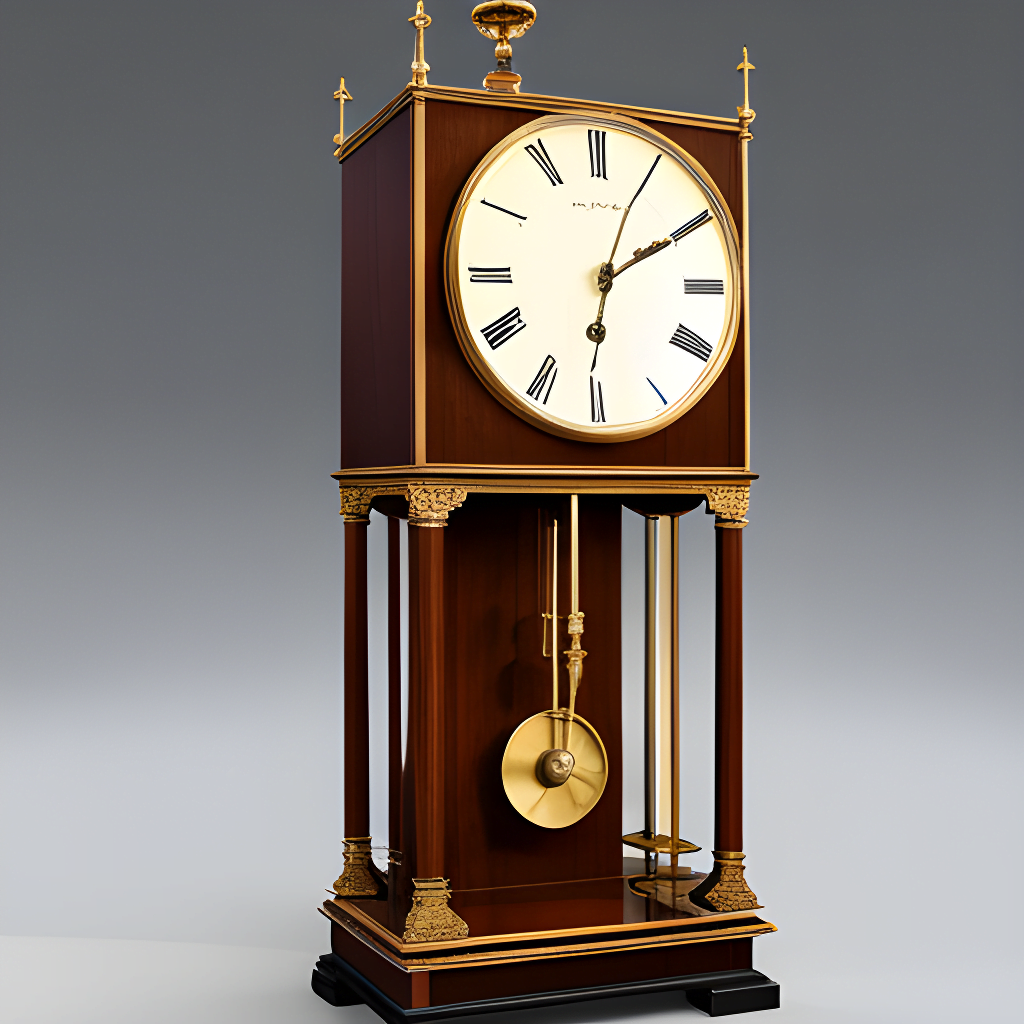
Key features of mechanical clocks include their precision, which relies on the consistent motion of internal components, and the rhythmic ticking sound produced by the escapement mechanism. These clocks were historically found in various forms, from grand tower clocks to smaller mantle or wall clocks, and they were a pivotal advancement in timekeeping before the advent of electronic and digital timepieces.
17th – 18th Centuries:
In the ever-evolving journey of timekeeping, the 17th and 18th centuries witnessed two significant breakthroughs that paved the way for more accurate and reliable watches: the pendulum clock and advancements in watch mechanisms. Let’s delve deeper into these innovations, their impact, and the historical figures behind them.
1657: The Pendulum Clock Arrives on the Scene
The Dutch scientist and inventor Christiaan Huygens revolutionized timekeeping with his invention of the pendulum clock in 1657. This ingenious device utilized the regular swinging motion of a pendulum to regulate the escapement of a gear train, leading to remarkable accuracy compared to previous timekeepers.
How it Works:
The pendulum, typically a suspended rod with a weight at the end, swings back and forth at a constant rate due to gravity. This motion is connected to the escapement, a mechanism that controls the release of energy to the gear train in precise increments. This regulated release ensures consistent ticks and accurate timekeeping.
Impact on Watch Design:
While Huygens’ invention primarily focused on clocks, it had a profound influence on watch design. The principle of the pendulum inspired the development of the balance wheel in watches, which mimicked the pendulum’s regular oscillations to achieve better timekeeping.
Historical Context:
Prior to the pendulum clock, mechanical timepieces were notoriously inaccurate, often losing or gaining minutes per day. Huygens’ invention marked a significant leap in precision, paving the way for more reliable timekeeping in various aspects of life, from navigation to scientific observation.
Further Exploration:
- Christiaan Huygens’ biography
- The history of the pendulum clock
- The National Institute of Standards and Technology (NIST)
1700s: Refinements and Advancements in Watch Mechanisms
The 18th century witnessed a flurry of improvements in watchmaking. Two crucial developments stand out:
- The Balance Spring: This coiled spring, attached to the balance wheel, provided a more consistent driving force than the previously used mainspring, leading to improved accuracy.
- The Escapement: Refinements in the escapement mechanism, like the lever escapement, ensured a more precise and reliable release of energy to the gear train, further enhancing timekeeping.
Impact on Watch Design:
These advancements combined to create significantly more accurate and reliable watches. Pocket watches, previously a luxury item for the wealthy, became smaller and more affordable, gaining popularity among the middle class.
Historical Context:
The rise of accurate timekeeping in the 18th century coincided with the Age of Enlightenment and the Industrial Revolution. Precise timekeeping became crucial for navigation, scientific research, and various industrial processes.
Further Exploration:
19th Century:
1845: Unwinding the Keyless Mystery
- In 1845, Warren De La Rue patented the keyless winding mechanism, revolutionizing how watches were wound. Prior to this, separate keys were required to wind the mainspring, a cumbersome and inconvenient process. De La Rue’s ingenious design incorporated a crown on the side of the case, eliminating the need for a separate key and allowing for easier and more convenient winding.
How it Works:
- The crown, when rotated, transmits power through a series of gears to the mainspring, tightening it and storing energy for the watch to run. This mechanism became the standard for winding watches, with further refinements like automatic winding emerging later.
- Impact: The keyless winding mechanism significantly improved user experience and contributed to the increasing popularity of watches. It also paved the way for more compact and streamlined watch designs.
Historical Context:
- This invention coincided with the rise of the Victorian era, where punctuality and time management became increasingly valued. The keyless winding mechanism made watches more accessible and practical, aligning with the changing social and economic landscape.
Further Exploration:
Mid-19th Century: The American Mass Production Boom
- The mid-19th century witnessed the rise of mass production techniques in the United States, which significantly reduced the cost of producing watches. Companies like the Waterbury Clock Company employed innovative manufacturing processes and interchangeable parts, making watches more affordable for the middle class.
- Impact: This shift made watch ownership a realistic possibility for a broader audience, leading to a surge in watch popularity. Watches transitioned from being luxury items for the elite to everyday necessities for many.
Historical Context:
- The growth of the American middle class during this period, coupled with advancements in transportation and communication, fueled the demand for accurate timekeeping. Watches became symbols of personal achievement and social mobility.
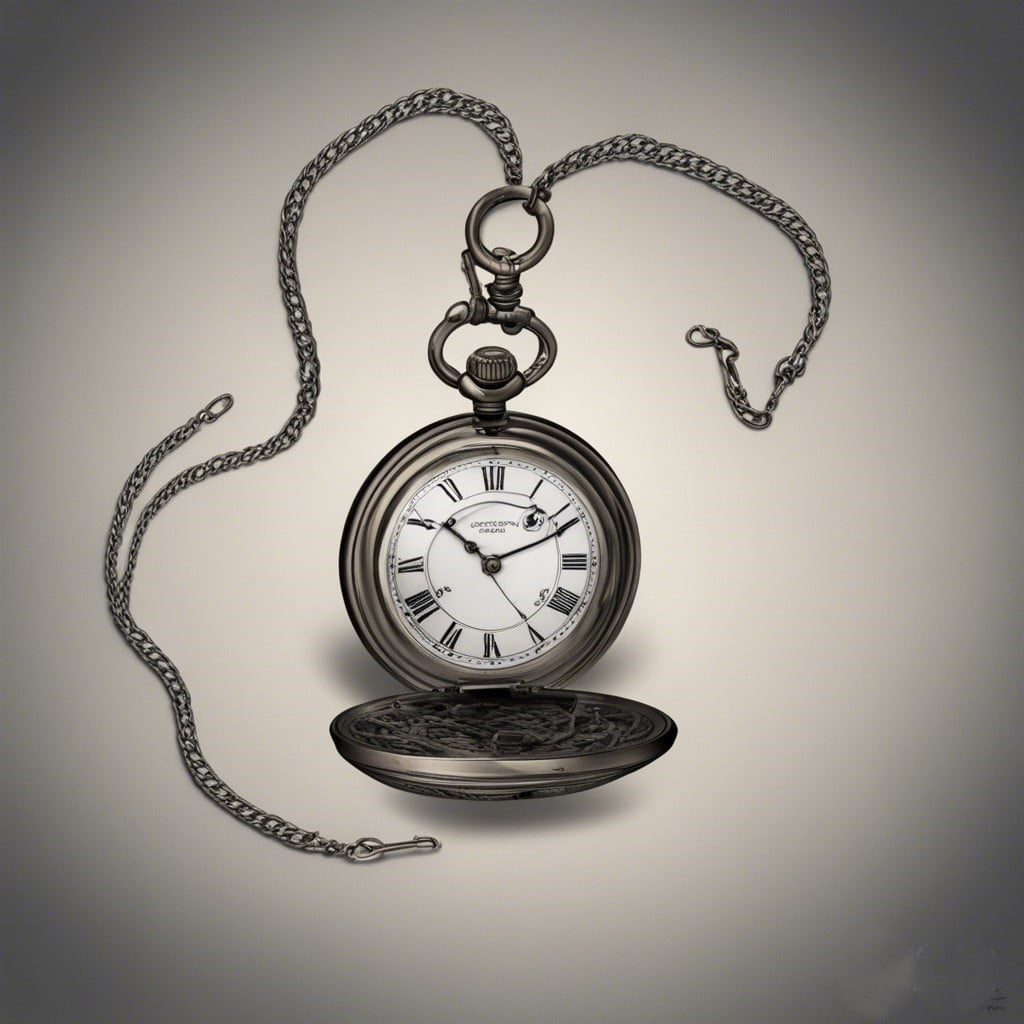
Late 19th Century: Pocket Watches in their Prime
- By the late 19th century, pocket watches had reached a peak of sophistication and popularity. Technological advancements like improved escapements and balance springs led to greater accuracy and reliability. Additionally, exquisite craftsmanship and artistry were incorporated into watch design, with intricate engravings, enamelwork, and precious metals adorning the cases.
- Impact: Pocket watches became not just tools for timekeeping but also status symbols, reflecting wealth, taste, and social standing. They were often passed down through generations, acquiring sentimental value and becoming treasured heirlooms.
Historical Context:
- This period they coincided with the Gilded Age in the United States and the Victorian era in Europe, characterized by economic prosperity and conspicuous consumption. Watches became coveted possessions, reflecting the desire for luxury and social advancement.
Further Exploration:
20th Century:
The 20th century witnessed two significant developments in watchmaking that reshaped how we tell time: the rise of the wristwatch and the birth of the automatic watch. Let’s delve deeper into these innovations, their impact, and the historical context that fueled their rise.
1920s: From Wrist to World:
While wristwatches existed earlier, the 1920s saw their surge in popularity. This was largely driven by World War I, where soldiers found them more practical than pocket watches in the trenches. Wristwatches offered hands-free timekeeping and were less prone to damage than their pocket counterparts.
How it Works:
Wristwatches typically used the same mechanical movements as pocket watches, housed in smaller cases and secured to the wrist with a strap or bracelet.
Impact: The wartime experience normalized wristwatch usage, paving the way for their wider adoption in civilian life. Wristwatches became fashionable accessories, particularly for women, as their smaller size and designs complemented changing fashion trends.
Historical Context:
The Roaring Twenties were a time of economic prosperity and social change. Wristwatches, with their sleek designs and practicality, reflected this new era of modernity and individuality. Additionally, the rise of leisure activities like sports and travel fueled the demand for portable timekeeping devices.
Data from History:
- In 1904, the Wristlet Watch Company sold only 2,500 watches; by 1920, that number exceeded 250,000. (Source: “The Watch: A History” by Jeremy Leslie)
- By the late 1920s, wristwatches accounted for over 50% of all watch production in Switzerland, the center of the watchmaking industry. (Source: Federation of the Swiss Watch Industry)
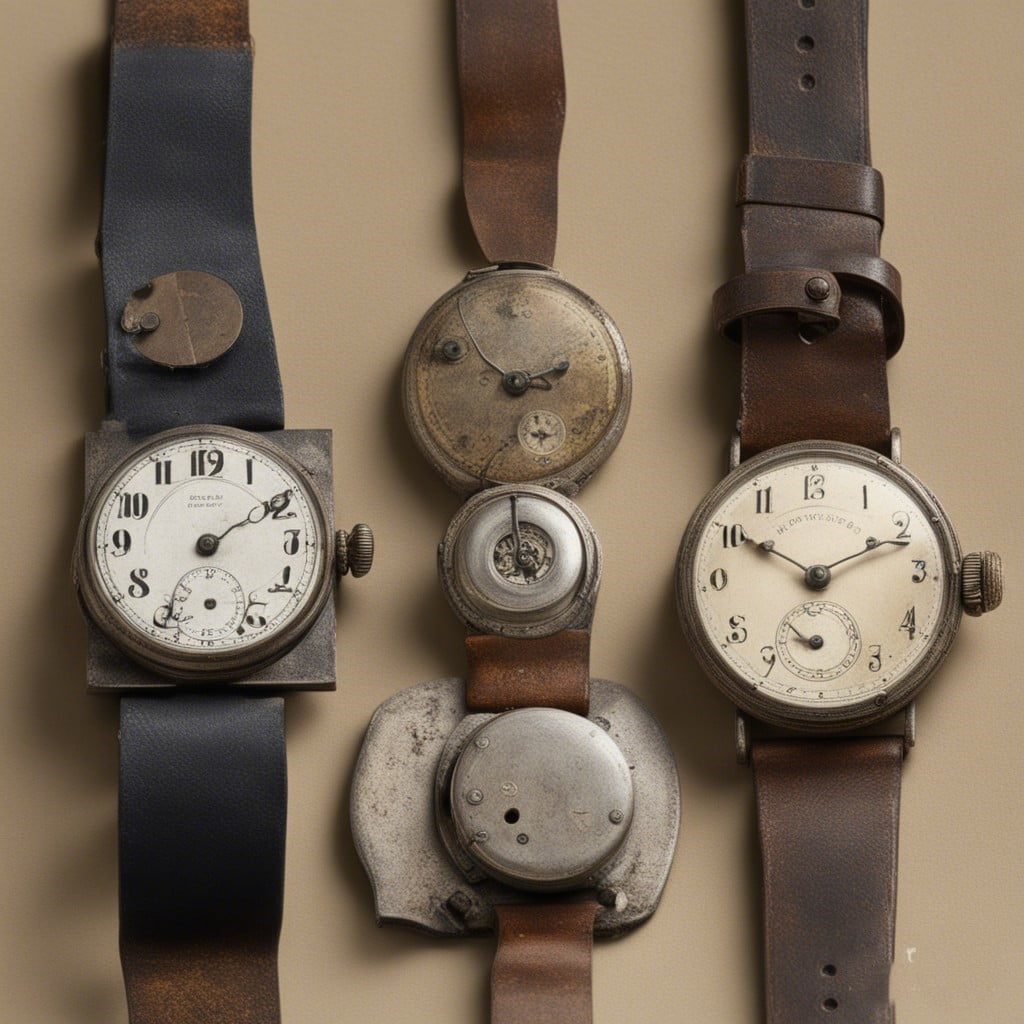
In the 1920s and 1930s, wristwatches underwent design improvements to become smaller, more stylish, and more aesthetically pleasing. Materials like gold, silver, and leather were used for their construction.
1930s: Self-winding Innovation (Automatic Watches):
The 1930s saw the introduction of the automatic watch, featuring a self-winding mechanism. This ingenious invention utilized a rotor, a small weight that rotated with the wearer’s movement, automatically winding the mainspring and eliminating the need for manual winding.
How it Works:
The rotor spins freely within the automatic movement, driven by the wearer’s arm movements. This rotation winds the mainspring, storing energy to power the watch.
Impact: The automatic watch offered greater convenience and practicality, especially for active individuals. It also represented a significant technological advancement, showcasing the ingenuity of watchmakers.
Historical Context:
The 1930s were marked by the Great Depression, but the automatic watch emerged as a symbol of innovation and progress. It catered to a growing demand for reliable and convenient timepieces that reflected a modern lifestyle.
Data from History:
- The first commercially successful automatic watch, the Rolex Oyster Perpetual, was launched in 1933.
- By the 1950s, automatic watches accounted for a significant portion of the high-end watch market. (Source: International Watch Museum)

Automatic watches, also known as self-winding watches, are mechanical timepieces that harness the motion of the wearer’s wrist to wind the watch’s mainspring, powering its timekeeping mechanism. These watches blend precision engineering with convenience, eliminating the need for regular manual winding when worn regularly. Appreciated for their intricate movements and timeless design, automatic watches are revered as symbols of craftsmanship and wearable artistry in the world of horology.
1960s: The Quartz Watch and Digital Revolutions
The 20th century witnessed two major revolutions in watchmaking, each leaving a lasting impact on how we tell time: the quartz revolution and the rise of digital watches. Let’s delve deeper into these innovations, their working principles, and their historical significance:
- In 1969, Seiko introduced the Astron 35SQ, the world’s first commercially successful quartz watch. This marked the beginning of the quartz revolution, a major shift from mechanical to electronic timekeeping. Unlike traditional watches that relied on the vibrations of a balance spring, quartz watches utilized a quartz crystal that vibrated at an incredibly stable rate, leading to superior accuracy (typically losing only seconds per year). Additionally, quartz watches were significantly cheaper to produce, making them more affordable for the general public.
How it Works:
- The heart of a quartz watch is the quartz crystal. When an electric current passes through the crystal, it vibrates at a precise frequency (usually 32,768 Hz). This vibration is then converted into electronic signals that control the movement of the watch hands or the display in digital watches.
- Impact: The quartz revolution had a profound impact on the watch industry. Mechanical watches, once the pinnacle of timekeeping technology, became significantly less popular. Quartz watches quickly dominated the market, making accurate timekeeping accessible to everyone. This revolution also paved the way for further innovations like thin and lightweight watches and multifunctionality.
Historical Data:
- By the 1980s, quartz watches accounted for over 90% of all watches produced globally.
- The quartz revolution led to a decline in the Swiss watch industry, which had traditionally focused on high-end mechanical watches.
- However, the industry adapted and eventually regained its footing by focusing on luxury watches and incorporating quartz technology into their designs.
Further Exploration:
21st Century: Timekeeping Transformed and the Watch’s Continued Allure
The 21st century has witnessed a fascinating crossroads in the world of timekeeping, with digital and smartwatches surging forward with technological marvels, while mechanical watches retain their charm and heritage. Let’s delve deeper into this dynamic landscape:
Digital and Smartwatches: A Technological Leap
- Digital watches burst onto the scene in the late 20th century, offering unprecedented accuracy and affordability. The 21st century saw them evolve into smartwatches, seamlessly integrating with smartphones and offering features like:
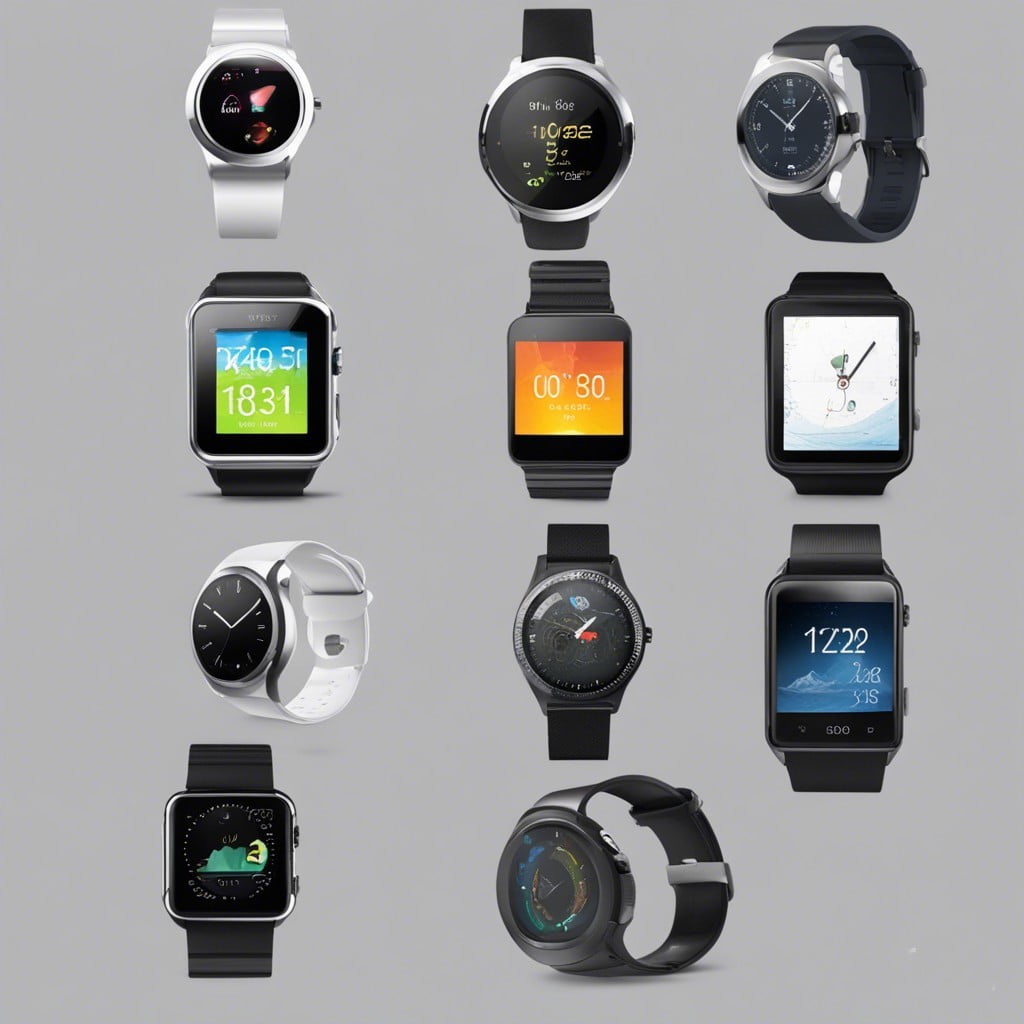
- GPS tracking: For fitness enthusiasts and outdoor adventurers.
- Health tracking: Monitoring heart rate, sleep patterns, and other vital signs.
- Communication functions: Making calls, sending texts, and accessing notifications.
- Advanced displays: Touchscreens, color displays, and even curved screens.
- Impact: Smartwatches have become ubiquitous accessories, offering convenience, connectivity, and health insights. They cater to a tech-savvy generation, integrating seamlessly with their digital lifestyles.
- A 2023 report by Statista projects the global smartwatch market to reach $27.5 billion by 2027, highlighting their immense popularity.
- While some view smartwatches as a technological marvel, others criticize their dependence on batteries and potential privacy concerns.
Mechanical Watches: Timeless Appeal Endures
- Despite the digital revolution, mechanical watches retain a dedicated following. Their craftsmanship, precision engineering, and heritage hold immense value for enthusiasts. Advances in materials like ceramics and silicon have enhanced their durability and performance.
- Impact: Mechanical watches remain luxury items, cherished for their timeless design and emotional connection. They are often passed down through generations, becoming treasured heirlooms.
- The Federation of the Swiss Watch Industry reports that exports of Swiss mechanical watches increased in 2022, demonstrating their enduring appeal.
- While mechanical watches offer a unique experience, their higher cost and potential need for maintenance can be drawbacks for some.
Beyond the Timeline:
- New Materials and Technologies: Innovations like graphene and lab-grown diamonds hold promise for even lighter, stronger watch components. 3D printing opens doors for personalized watch designs.
- Cultural Reflections: Watches continue to mirror fashion trends and cultural shifts. From minimalist designs to bold statements, they reflect individual preferences and cultural influences.
The Ever-Evolving Watch:
The 21st-century watch landscape is a captivating interplay of technological advancements and enduring traditions. Whether it’s the convenience of digital features or the timeless elegance of mechanical craftsmanship, the watch remains an object of fascination, transcending its core function of timekeeping. It serves as a personal statement, a cultural symbol, and a testament to human ingenuity, continuously evolving to reflect the changing times.
Further Exploration:
Future:
The future of watches holds exciting prospects. Smartwatches are expected to continue evolving, with improved health monitoring capabilities, longer battery life, and increased integration into our daily lives. Artificial intelligence may play a role in enhancing the functionality and personalization of smartwatches.
Traditional watches are likely to persist as timeless accessories and collectibles, with an emphasis on sustainable practices and eco-friendly materials. Watchmakers may explore innovative materials and design concepts to create unique and environmentally conscious timepieces.
Additionally, customization and personalization could become more prevalent, allowing individuals to design their watches according to their preferences. Advanced manufacturing techniques, such as 3D printing, may enable greater flexibility in watch design and production.
Overall, the future of watches will likely involve a harmonious coexistence of traditional craftsmanship, advanced technology, and sustainable practices to meet the diverse demands of consumers in an ever-changing world.
Conclusion
In conclusion, the invention and evolution of the watch are a testament to human ingenuity and our relentless pursuit of precision and convenience in measuring time. From ancient sundials to modern smartwatches, these timekeeping devices have not only mirrored their times but also profoundly influenced the way we live and interact with our world. Looking ahead, we anticipate exciting developments that blend tradition with cutting-edge technology, keeping the legacy of watchmaking alive and ticking.
Also, Check out interesting blogs-




